Read the unedited version before it was screwed up by Maxim
Up in the Air: A Daring Helicopter Rescue in Yosemite
(line)
Feature by Frank Owen for Maxim
(line)
Yosemite National Park
The rescue began with a cell phone call from an injured climber concerning a severed thumb. The digit in question belonged to — or at least used to, before it became detached from its owner — Michael Schmoelzer, an Austrian climbing instructor with a weathered face that was now splattered with dirt and blood. Schmoelzer and his partner Richard Edelbacker were ascending El Capitan, a big wall so immense that the mighty Ponderosa pines that decorated the base looked like puny Japanese bonsai trees by comparison
It was just before 3 pm on September 26, 2011, on the third day of their ascent, when Schmoelzer’s dream of entering the pantheon of the rock gods by climbing this most iconic of obstacles came crashing down the mountainside. Schmoelzer had just clipped an aider — a short ladder made of webbing — into a metal nut he’d wedged into a crack in the warm rock and then pulled his body onto the ladder and moved up a couple of feet to jam a second nut into another crevice. The aider appeared secure as he stepped in it but all of a sudden he felt himself falling backwards. The second nut ripped from the wall and he was now tumbling off the cliff face, but thankfully the safety rope quickly snapped tight and caught him before he could fall any further. Somehow, during the fall, the rope ladder had wrapped around his thumb, severing the finger, leaving behind an ugly mess of exposed bone and hanging tendons.
Schmoelzer yelled down to his partner eighty feet below him.
“Did you see my thumb?”
“Yes,” came the reply.
Oddly enough, the thumb hadn’t bounced off the cliff and into the forest.
“It’s lying here on the ledge next to my feet,” said Edelsbacker.
Down in the valley, park ranger Dave Pope was feeling beat after finishing up his work as the manager of the Yosemite Medical Clinic when he got a call about a climber in trouble on El Capitan. Pope — a lean and lofty 29 year-old with a wholesome All-American air and a passion for the outdoors — studied business at the University of Colorado and was headed for a cubicle job in a bank, when his life abruptly changed course five years ago after he joined the Park Service. The pay wasn’t great — $50-$85,000 a year depending on responsibilities — but the sunsets were spectacular and the feeling coming back safely from a successful rescue mission was a high like no other. In his spare time, Pope had on numerous occasions climbed El Cap, all thirty-six rope lengths of perpendicular granite. He knew practically every nook and cranny. He was intimately familiar with how hazardous the Big Stone could be, even for the most competent climbers.
Fellow park ranger Jeff Webb was at home in his two-bedroom log cabin getting ready to start his evening shift and was expecting to spend the rest of the day handing out speeding tickets to tourists when his cell phone rang. The skinny, wisecracking 41 year-old adventure addict had spent much of the previous decade working his way around the globe — teaching English in Taiwan, doing odd jobs in Spain, living for a year in Ecuador, pausing along the way to climb Mount McKinley in Alaska and ski the celebrated Haute Route between Chamonix, France and Zermatt, Switzerland. In 2008, he came to Yosemite to become a park ranger, where he soon grew familiar with the hidden dangers behind the park’s pretty pictures. Webb loved his job but he worried about burnout. A head splat here. A broken femur there. Bodies literally split in half from a big fall. It was getting to the point, where every time he looked at the breathtaking scenery, he saw a dead person. Only the previous week another Austrian climber, Markus Praxmarer from Innsbruck, plunged to his death from the nearby Half Dome mountain.
Outside, nature was in repose; the weather was warm and the winds blew light. It was a perfect day for a rescue.
(line)
Pope and Webb are members of YOSAR, the unofficial name for Yosemite Search and Rescue. It’s YOSAR’s job not only to save injured climbers on rock faces, but to track down missing hikers and rescue swimmers from drowning in the park’s raging rivers. They don’t always succeed.
It had been a tough year for the team. Twenty-one visitors had died making it the worst year for fatalities since 1978 and earning Yosemite the unenviable title of “the most dangerous national park in America”. A record four million tourists visited the park, which covers an area two-thirds the size of Rhode Island. On some weekends, more than 11,000 cars a day passed through its gates. But the main culprit, most of the crew agreed, wasn’t the crush of people, but the unusually harsh winter which caused record high waters throughout the spring and summer after the snow pack melted.
Perhaps the most tragic incident happened in July, when three day-trippers from the St. George Assyrian Christian Church in California’s Central Valley climbed over the safety barrier at the top of Vernal Falls to pose for photographs. Onlookers warned them about the danger. 21 year-old Ramina Badal lost her footing on the slippery rocks and fell 300 feet over the waterfall, quickly followed by Hormiz David, 22, and Ninos Yacoub, 27, who were both trying to save her.
The church members angrily criticized YOSAR and accused it of not doing enough to save their fellow congregants. Why didn’t it post a lifeguard at the top of the falls? Why didn’t it put a net at the bottom to catch anybody that fell? Why didn’t it order divers into the water? At the time, Vernal Falls was a Class 6 Rapids: the water was flowing at 800 cubic feet per second, equivalent to the impact of sixty double wide trailers going over a cliff every minute.
“No diver in their right mind would have gone into those waters”, says Dov Bock, a former hippie chick who grew up living in a cabin in the woods wanting to be a botany illustrator before becoming YOSAR’s chief of operations. “It was a wall of white.”
The deaths tore a hole in the close-knit Assyrian Christian community in Modesto. Even after YOSAR gently explained that some people were simply unsaveable, groups from the church continued to visit YOSAR HQ claiming that they’d received religious visions in which God had told them the young victims were still alive and living in a cave at the bottom of the waterfall.
“What do you say to people in a situation like that?” says Jeff Webb. “You don’t want to disparage their faith, but I knew they were long dead.”
Two and a half weeks after the devastating event, a rescue team retrieved the body of Hormiz David after finding him about 240 feet from the base of the waterfall trapped under a rock. The search continued for the two other victims but they have yet to be found.
Park personnel rejected the idea that more signs or bigger guard rails could have prevented the tragedy. “We don’t want to fence everything in,” says John Dill, now-retired YOSAR veteran but still a permanent feature around the office as resident search-and-rescue guru and who sports the gaunt leathery look of someone who has spent too much time outdoors.
“It’s supposed to be a wilderness,” he said. “We don’t want to turn Yosemite into a petting zoo.”
(line)
It was now 3.30 pm, and while the two Austrian climbers waited stoically on the side of EL Capitan for help to arrive, YOSAR HQ bustled with activity. The operations center is housed in a brown wooden building with a rusty corrugated roof that stands in the shadow of North America’s tallest waterfall, Yosemite Falls.
In the middle of June, a depressed 30 year-old named George Penca became separated from his party and went missing at the top of the waterfall. YOSAR launched a Herculean operation involving 140 people, which included helicopters, ground crews, and tracker dogs wearing GPS devices, but after four days, no trace of him was found, not even a foot print.
Inside the building, the photos of the missing and the dead stared down from the walls, including a glum-looking Penca wearing a black D&G t-shirt just before he disappeared. They were part of YOSAR’s client base: victims of human frailty, bad weather, poor judgement, gross stupidity or simply lousy luck.
YOSAR team members considered two options to rescue the injured Austrian: one was to use long ropes to lower rescue workers from the top of El Cap and then haul Schmoelzer back to the summit. But that could take hours and might not happen until the next day, which meant that they wouldn’t be able to deliver Schmoelzer to a hospital in time for a surgeon to successfully reattach his thumb. The second option was much quicker but pregnant with danger: fly a helicopter close to the cliff face and pluck Schmoelzer to safety.
Every major YOSAR mission is ranked as low-risk, medium risk, or high risk (green, yellow, or red) depending on a number of different factors. Before the crew sprung into action, they went down the check list.
First, they considered whether they had enough personnel? The answer was affirmative. They had more than enough qualified team members — as well as a backup team of young volunteers called SAR-siters — to pull off both a helicopter rescue, and if that went awry, a traditional rope rescue from the summit.
Did they have the right people to execute the mission? Again, yes. A number of seasoned veterans with decades of rescue experience between them were on hand to help.
What about the location of the victim? They knew exactly where Schmoelzer was; he was trapped between the Great Roof overhang and Camp V, an address as familiar to serious climbers as 42nd Street and Broadway is to New Yorkers.
In addition, the weather — always a major factor in deciding whether it’s a go or a no-go — were ideal.
The last category “incident complexity” was the most problematic: It’s no mean feat to hover a helicopter 2,000 feet in the air next to a granite wall. Harder still, when the goal of the mission is to extract an injured party from a stone ledge not much bigger than a kitchen shelf.
Incident commander Eric Gabriel mulled the matter over for a moment, then gave the go-ahead. He ordered Dave Pope and Jeff Webb, both trained EMTs, to don their safety helmets and flame-retardant flight suits to prepare to go up in the chopper.
He then turned to Dave Pope’s wife, operations chief Dov Bock: “I want you to coordinate the back-up plan. Pack gear, grab ropes, load it up on the truck and when you’re ready, drive to the meadow and meet the helicopter.”
The afternoon light was beginning to fade. Before long, shadows would start to creep up the mountainside. Soon “Pumpkin Hour” would arrive, the time regulations require the helicopter to return to base.
(line)
The YOSAR team arrived to find the helicopter — an old school Bell 205 with upgraded rotors for high altitude flying — already skids down in the meadow. Also there to help were the so-called SAR-siters, young dirtbag climbers from Camp 4, the historic campsite that’s not as rowdy and rambunctious as it was back in the Golden Age of Yosemite rock climbing in the 1960s and 70s, but still wild enough that park rangers occasionally have to bust one of the camp residents for pot smoking or underage drinking.
Chopper pilot Richard Shatto, who when not helping YOSAR spent most of his time fighting forest fires for the local fire department, whisked Pope and Webb into the air to perform a quick scene assessment. Even after five years flying for YOSAR, the sheer size of El Capitan always made Shatto shudder a little. There’s invariably a large element of danger in any vertical wall rescue. In 2005, during a rescue on Yosemite’s Higher Cathedral Rock, a strong downward current of air sent a helicopter out of control and the rescue victim, who was lying on a stretcher suspended from the chopper at the time, was wrapped around a tree and killed.
Shatto thought about refusing the mission but then saw Michael Schmoelzer and Richard Edelbacker huddled together in a recessed nook. Edelbacker spotted the craft and extended his arms above his head in a Y-shape, the international distress symbol used for helicopter rescues which means: “Yes, come and get us.”
Shatto made sure there were no other climbers on the wall close to the Austrians. The last thing he wanted was to knock some unsuspecting mountaineer into the meadow because of a rush of air from the rotor blades. Then he shouted over his shoulder: “This is good. I can do this, can you do this?”
“Dude, if you can keep us in this position, it shouldn’t be too bad,” Jeff Webb yelled back over the roar of the engine.
The helicopter now spiraled back down to the valley floor, and while the team waited for the helicopter engine to cool down, incident commander Eric Gabriel went over the risks involved in the operation one last time. If the winds started to gust, he told them, they should have no compunction about calling off the rescue. Downdrafts can drop a helicopter a thousand feet in a matter of seconds.
The chopper was now ready to go, so Webb and Pope quickly grabbed climbing equipment and medical bags, and then attached themselves to a short haul line which was fastened under the belly of the helicopter. Shatto gently eased the chopper back into the air, this time with the two EMTs dangling from a rope 150 foot below him like a giant pendulum swinging from a clock.
In the meadow, tourists stared slack-jawed in amazement at the spectacle that was unfolding before them. If Dov Bock was worried about her husband, she made sure not to show it, even though his life was literally hanging from a thread. Meanwhile, John Dill peered at the climbers through a high-powered telescope and braced himself for what was about to happen next.
In the 1980s, Dill, a trailblazer in new search and rescue methods, invented a novel way of rescuing climbers on vertical cliff faces called the “bean bag toss,” a technique whereby a baseball-sized bag of sand connected to a nylon rope was thrown to victims from a helicopter. It was intended as a way to deliver food and clothing to stranded climbers to buy some time in an emergency. Climbers would secure the line to the cliff face which allowed the helicopter crew to send over supplies. Before his invention, if a helicopter pilot wanted to deliver equipment to a stranded climber, the pilot would have to sway the aircraft back and forth like a mother rocking a cradle, a dangerous maneuver designed to create enough momentum to swing the load over to the ledge. While Dill’s invention was a big improvement, it was hardly a perfect science. A lot could still go wrong. And he never meant it to be used to ferry such large loads, let alone human ones. Pope and Webb, along with all their equipment, weighed about 500 pounds.
The pilot approached El Capitan as slowly as he could to avoid swinging the two short-haulers into the side of the cliff. As the giant granite wall loomed ahead, Pope started to call out the distance between the tip of the rotor blades and the cliff face to the helicopter crew through a two way radio imbedded in his helmet: “60 feet rotor clearance, 40 feet rotor clearance, 20 feet rotor clearance.” Any closer would be suicidal.
The crew chief Eric Small was sitting in the helicopter door with his feet on the skids, ready to rip off the tab from a plastic container and throw the bean bag to the climbers, but when he did, the 75 foot cord to which the bag was fastened was too short to reach them and the bag ended up hanging in space. Shatto dropped the chopper lower and Small tried again but the cord still proved too short. Shatto repositioned the chopper once more and they tried a third time, then a fourth, a fifth and a sixth but without success. By this point, the helicopter crew was starting to panic. Below the chopper, Pope and Webb thought the mission had failed and were ready to head back down to the staging area. However, after ransacking the aircraft, the third crew member Jeff Pirog found another bean bag: “OK, this is the last one”.
Shatto hugged as close to the Austrians as sanity allowed, and Small took a deep breath and threw out the final bag. This time it was a success. Edelbacker grabbed hold of the bag and anchored the cord to the wall, while Pope and Webb readied themselves to make the move to the ledge. The bean bag cord was already attached to a regular rope which was then lowered to Pope and Webb from the helicopter in a giant loop. As of that moment, Pope and Webb were connected to the ledge where the climbers waited. The helicopter rose higher so that the two medics were in line with the rock shelf.
Now came the heart-stopping part of the mission.
(line)
No helicopter pilot wants to be tethered to a giant rock. It’s something search-and-rescue teams try to avoid. Normally, at this point during the rescue, the helicopter would disconnect from the mountainside, fly around for a while, and then come back to pick up the injured party. But because the crew had used the last bean bag, Shatto felt they had little option but to to stay in position. Even so, as long as Pope and Webb quickly hurried across the 20 foot gap between them and the climbers, he thought he could maintain his position without drifting into the cliff face.
The initial idea was for Edelbacker to pull the park rangers over to the ledge, but the Austrian was so weak with exhaustion that the rope kept slipping through his fingers. Pope and Webb motioned for him to tie the rope to the rock and started dragging themselves across to the ledge. It was backbreaking work. At this point, the duo was no longer perpendicular to the aircraft, but at an angle, and as they pulled harder on the rope, the angle increased. Shatto prayed that an unexpected gust of wind didn’t send the chopper into a tailspin.
Shatto grew impatient and stared out of the bubble-like vertical reference window on the side of the helicopter that allowed him a clear downward view. By now, he had expected them to have nearly made it across, but they were less than half way there.
“Come on, guys,” he thought to himself. “I can’t keep hovering in this position all day.”
It was the longest ten minutes of Shatto’s life, but the two EMTs eventually succeeded in pulling themselves across to the ledge, where the first thing Webb asked Schmoelzer was “Do you have the thumb?” Conversation was difficult because of the the noise of the rotors slapping against the air, so Schmoelzer simply tapped the breast pocket of his jacket with his left hand to indicate he had the thumb safe and sound, stored in a ziplock bag in his jacket.
Pope inspected the injured Austrians’s hand and decided that he could wait for medical attention until he got back on the ground, but it took another four or five minutes for Pope to hook him to the short haul rope.It had been decided in advance that Pope would fly off with the injured Schmoelzer, while Webb would spend the night with the other climber for fear of overloading the helicopter.
Finally, Webb cut the anchor line between the rock and the helicopter and announced the words Shatto had been waiting to hear for thirty long minutes: “Disconnect and clear.” The pilot moved carefully away from the cliff face and flew Pope and the injured climber down to the ground. There, a medical team met Schmoelzer, put his finger on ice and hustled him into another helicopter that flew him to San Francisco’s California Pacific Medical Center, where around one in the morning, a surgeon successfully reattached his thumb.
(line)
Three weeks later, YOSAR team members gathered around a lunch table in a spartan meeting room at the helicopter base in the nearby town of El Portal to conduct an “after action review.” The consensus was that the operation could have gone smoother; YOSAR needed more training using the bean bag toss. There was some dispute about why it took so long for Dave Pope and Jeff Webb to reach the climbers. The helicopter crew said the length of the cord was too short. Pope — backed up with diagrams and mathematical calculations supplied by John Dill — claimed it was the position of the helicopter that was at fault.
All the same, the mission had proved a success. No first responder was injured and Schmoelzer was recuperating at home in Austria, eternally grateful to the brave men and women of YOSAR for risking their lives to reunite him with his thumb but forever haunted by the blank-faced giant he never got to conquer.
END
Like this:
Like Loading...
 When Karina moved to Miami Beach from Eastern Europe in 2007, she used no nicotine, no alcohol, no drugs, nothing. Although she’d had a problem in her midteens with booze and MDMA, the 22-year-old was determined to begin her new life in America clean and sober.
When Karina moved to Miami Beach from Eastern Europe in 2007, she used no nicotine, no alcohol, no drugs, nothing. Although she’d had a problem in her midteens with booze and MDMA, the 22-year-old was determined to begin her new life in America clean and sober.

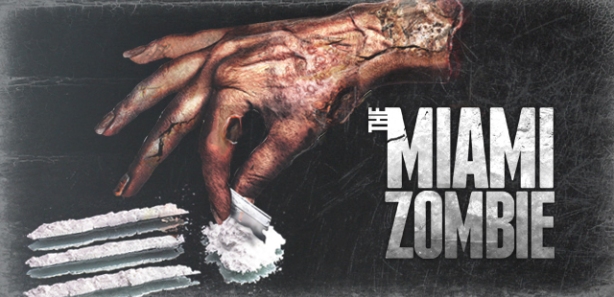


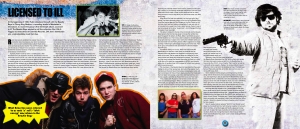




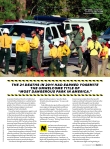
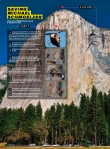



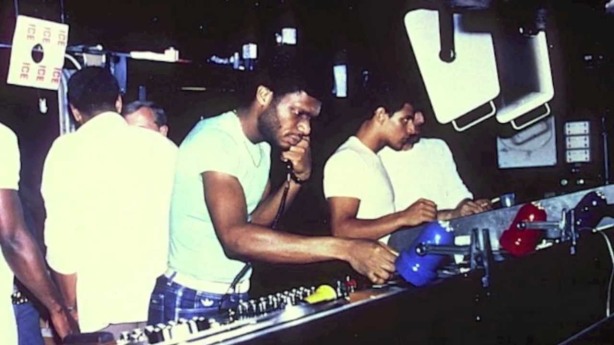

 Michaelangelo Matos Interviews Frank Owen for Red Bull Music Academy
Michaelangelo Matos Interviews Frank Owen for Red Bull Music Academy